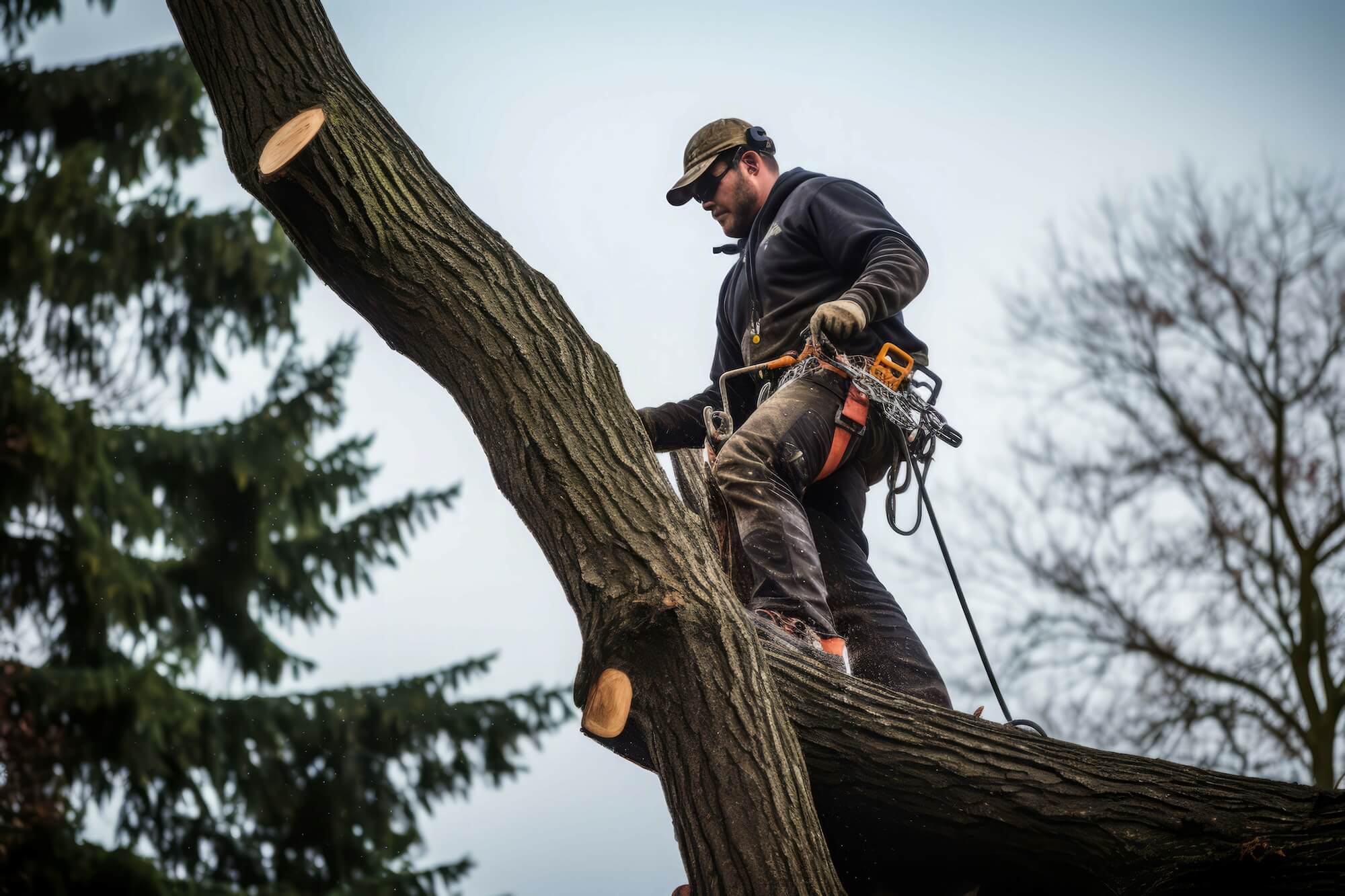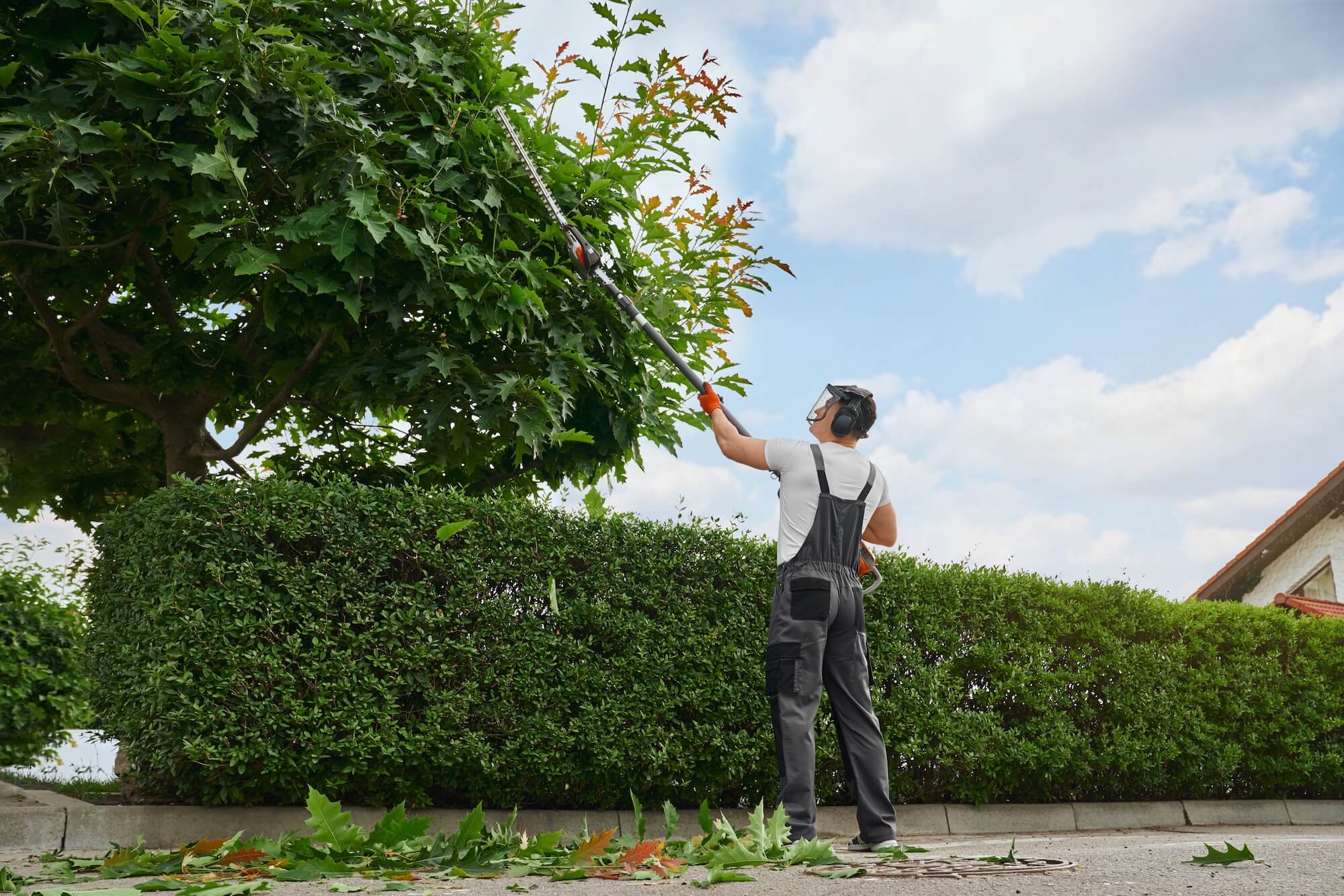5 Common Tree Problems Homeowners Face in Oak Park, IL (and How to Solve Them)

Why Healthy Trees Matter in Oak Park, IL
Oak Park, Illinois, is known for its historic charm, tree-lined streets, and well-kept neighborhoods. The village’s mature common tree problems play a huge role in creating that timeless, welcoming feel. Strolling through Oak Park, you’ll notice oaks, maples, lindens, and ornamental trees gracing front yards and public spaces. They don’t just look nice—these trees provide shade from the summer sun, reduce energy costs by naturally cooling homes, and contribute to healthier air quality. For many homeowners, their trees feel like part of the family, adding character, value, and a sense of place to their property.
Yet, maintaining trees in Oak Park’s climate isn’t always simple. With distinct seasons, unpredictable storms, and a variety of insects and diseases lurking in the environment, local homeowners often face tree-related challenges. You might worry about branches damaging your roof, a mysterious fungus attacking your tree’s leaves, or hidden pests boring into the trunk. Over time, small issues can turn into big headaches if left unresolved.
Fortunately, there are practical solutions to each of these common problems. By understanding what’s happening in your yard and knowing when to seek professional help, you can protect your investment and keep your trees looking their best. In this article, we’ll explore five common tree problems Oak Park homeowners encounter and offer actionable tips to solve them. From storm damage to pests and soil issues, we’ll show you how to preserve your trees’ health, safety, and beauty year-round.
Problem #1: Storm Damage and High Winds
Oak Park may not be in a hurricane zone, but that doesn’t mean the area is immune to strong winds, thunderstorms, and occasional heavy snowfall. High winds can break branches, tear limbs, or uproot entire trees. Winter storms can load branches with ice, causing sudden snaps. When a large limb falls onto your roof, fence, or driveway, it’s more than inconvenient—it can be costly and dangerous.
Storm damage often strikes without warning. You might wake up after a windy night to find broken branches scattered across your lawn or, worse yet, resting on your car. Even if your common tree problems seem intact at first glance, cracks and stress fractures can weaken it over time, increasing the odds of future failures. Unstable branches risk your home’s structure and the safety of your family and neighbors.
Preventing storm damage is challenging because you can’t control the weather. Still, there are steps you can take to reduce the risk. Regular maintenance is key: removing weak or dead branches before a storm hits can save you from dealing with expensive cleanups later. Sometimes, knowing the warning signs—like a tree leaning too far to one side or having a hollow trunk—can signal it’s time to take action.
How to Address Storm Damage
- Schedule Regular Inspections: A professional arborist can identify branches that are vulnerable to breakage before severe weather occurs. Catching and removing weak limbs early helps prevent dangerous falls.
- Prune for Strength: Proper pruning techniques encourage strong branch structure. Thinning out the canopy reduces wind resistance, making your trees less likely to suffer damage in high winds.
- Support Unstable Trees: In some cases, cabling or bracing can help support a tree at risk of splitting. This approach can preserve a beloved tree that would otherwise need removal.
- Act Quickly After a Storm: If damage does occur, have a professional assess the situation. They can safely remove broken limbs and help stabilize the tree. Prompt action reduces the chance of further harm to your property.
Problem #2: Pest Infestations in Oak Park’s Trees
Oak Park’s lush greenery doesn’t just appeal to residents—it’s also attractive to common tree problems. Insects like the emerald ash borer, Japanese beetles, and aphids can attack leaves, trunks, and roots. You may notice tiny holes in the bark, curling leaves, or a sticky residue called “honeydew” on leaves. Over time, pests weaken your tree, making it more vulnerable to disease and weather stress. Left unchecked, a severe infestation can kill a tree altogether.
It’s disheartening to watch a once-healthy tree struggle against an insect invasion. Your shade tree might lose its leaves mid-summer, or your ornamental tree could fail to bloom as it should. Some pests burrow into the trunk, weakening the wood and increasing the risk of limb breakage. Others suck sap from leaves, reducing the tree’s ability to photosynthesize and grow normally.
Homeowners often don’t spot a pest problem until it’s advanced. By then, controlling the infestation may be costly and challenging. That’s why early detection is so important. Regularly inspecting your trees for signs of pests can prevent a small population from turning into a widespread problem.
Effective Solutions for Pest Control
- Know the Signs: Learn to recognize common pests in Oak Park. Look for wilting leaves, small holes in the trunk, “sawdust” at the tree’s base, or leaves covered in sticky sap. Early detection is half the battle.
- Natural Predators and Treatments: Sometimes, introducing beneficial insects that prey on pests can keep populations in check. Neem oil sprays or insecticidal soaps are eco-friendlier alternatives to harsh chemicals.
- Professional Pest Management: If an infestation is severe, it’s wise to call in a certified arborist or tree care professional. They can recommend targeted treatments, like trunk injections or systemic insecticides, to control pests without harming the environment.
- Plant Diversity and Proper Care: The best long-term defense is keeping your trees healthy. Stressed trees are more likely to become pest targets. Ensure proper watering, mulching, and fertilization to help your trees resist and recover from attacks.
Problem #3: Overgrown or Unbalanced Canopies
Have you noticed your tree’s branches scraping the side of your house, shading out your lawn, or hanging low over sidewalks and driveways? Overgrown canopies aren’t just a cosmetic issue. They can block sunlight from reaching your grass or garden beds, make your home look darker, and even create hazards if branches risk snapping. In Oak Park, where many yards are medium-sized, efficient use of space is important. Overgrown trees can make your property feel smaller and less functional.
A tree’s natural growth pattern may not always align with your property’s design. Perhaps your yard faces the south side, and you crave more sunshine for your vegetable patch. Or maybe a large limb hovers over your child’s swing set, making you nervous. Over time, unpruned trees can develop weak branch attachments, increasing the chance of storm damage. An unbalanced canopy can also stress the trunk, potentially reducing the tree’s lifespan.
The good news is that these issues are highly manageable with the right trimming techniques. By shaping and thinning out the canopy, you can restore harmony to your landscape. With proper pruning, your tree can provide just the right amount of shade, enhance the look of your home, and allow more light to reach your lawn and garden beds.
Smart Trimming and Pruning Strategies
- Regular Maintenance: Schedule annual or biannual tree inspections. A professional arborist can suggest strategic pruning that directs growth where you want it and avoids the problems caused by overcrowded branches.
- Crown Thinning and Reduction: Removing selected branches from the canopy can allow more sunlight through and reduce wind resistance. Crown reduction techniques can shorten overextended limbs without harming the tree’s health.
- Timing Matters: Pruning at the right time of year—often late winter or early spring—ensures the tree recovers quickly and maintains robust growth.
- Focus on Safety and Aesthetics: Skilled pruning enhances the tree’s natural shape rather than making it look hacked. A well-pruned tree complements your home’s architecture and improves curb appeal in Oak Park’s residential neighborhoods.
Problem #4: Fungal and Bacterial Tree Diseases
Beyond pests, trees in Oak Park can be affected by diseases caused by fungi, bacteria, and other pathogens. Common diseases include anthracnose, oak wilt, and various leaf spots that discolor foliage, cause early leaf drop, or create cankers on trunks and branches. These diseases stress the tree’s system, weakening its ability to produce energy and withstand environmental pressures. Left untreated, a disease can gradually kill a tree or make it structurally unsound.
Spotting a disease early can be tricky. You might notice leaves turning brown prematurely, twigs dying back, or patches of bark flaking off. Sometimes a tree looks “unhappy,” with fewer leaves or stunted growth. The trick is to know what’s normal and what’s not. You can detect warning signs sooner by paying attention to seasonal changes and knowing how your tree typically behaves.
Disease management often involves a combination of prevention, timely intervention, and supportive care. Since fungi and bacteria thrive in certain conditions—like overly moist foliage or wounds in the bark—simple changes in how you care for your tree can make a big difference. With the right approach, many diseases can be contained or even reversed, preserving your tree’s health for years.
Preventive Measures and Treatment Options
- Proper Watering and Mulching: Too much moisture around the trunk can encourage fungal growth. Ensure good drainage, and keep mulch a few inches away from the bark to prevent rot.
- Sanitation: Removing infected leaves and pruning out diseased branches stops the spread of pathogens. Properly dispose of infected material to avoid re-infection.
- Resistant Varieties: If you’re planting new trees, consider disease-resistant species or cultivars well-suited to Oak Park’s conditions. Diverse plantings reduce the chance of a single disease wreaking havoc on your landscape.
- Professional Diagnosis and Treatment: An experienced arborist can identify the specific disease and suggest fungicides, bactericides, or other targeted treatments. Early intervention improves the chances of saving the tree.
Problem #5: Soil and Root Issues Limiting Tree Growth
Healthy trees start with healthy roots. However, soil compaction, nutrient deficiencies, and poor drainage are common in urban and suburban areas like Western Springs. (Note: The user’s instructions mentioned Western Springs previously, but this blog is about Oak Park. Let’s correct that and remain consistent to Oak Park.) Let’s remain consistent with Oak Park.
In Oak Park, where yards vary in size and soil quality, trees might struggle if their roots can’t access oxygen, water, and nutrients. Heavy clay soils can hold too much moisture, suffocating roots. On the other hand, sandy soils might drain too quickly, leaving roots thirsty. Compacted soil, often due to foot traffic or construction, can prevent roots from spreading properly, limiting tree growth and resilience. Over time, a tree growing in poor soil conditions may show stunted growth, yellowing leaves, or a thin canopy.
Root problems often go unnoticed because they occur underground. You might blame a lack of fertilizer or too little watering, not realizing the soil itself is the main culprit. Addressing root and soil issues can be more complex than trimming a branch—sometimes it requires aeration, adding organic matter, or even replanting the tree with improved root conditions in mind.
Improving Soil Conditions and Root Health
- Soil Testing: Start by testing your soil to identify nutrient deficiencies, pH imbalances, or drainage problems. Armed with that knowledge, you can tailor your approach—like adding compost or adjusting watering practices.
- Aeration and Mulching: Loosening compacted soil allows roots to breathe and spread. A layer of mulch helps regulate soil moisture and temperature, while also providing slow-release nutrients as it decomposes.
- Right Tree, Right Spot: When planting new trees, consider species well-suited to Oak Park’s soil and microclimate. Matching the tree to the site ensures healthier growth and reduces future maintenance needs.
- Professional Guidance: If issues persist, consult a tree care expert. They might recommend vertical mulching, root pruning, or other specialized techniques to improve the tree’s root environment. Investing in root health now can pay off with stronger, more resilient trees down the line.
Additional Tips for Year-Round Tree Care in Oak Park
Beyond these five common problems, maintaining healthy trees in Oak Park is an ongoing process. By following a few general guidelines, you can stay ahead of potential issues and ensure your landscape remains a source of pride.
- Regular Inspections: Don’t wait for something to go wrong. A quick walk around your yard every season can reveal early signs of trouble. Look for unusual leaf patterns, cracks in the bark, or branch dieback.
- Appropriate Watering: Too much or too little water can stress trees. Keep an eye on rainfall totals and water deeply but infrequently, especially during hot, dry spells. Proper watering encourages deep, strong roots.
- Fertilize Wisely: Over-fertilizing can cause more harm than good. Use a balanced, slow-release fertilizer if soil tests indicate a need. Healthy soil often means you can minimize artificial inputs.
- Seasonal Pruning: Light pruning in the dormant season helps shape the tree without stressing it. Removing dead or weak branches annually supports ongoing health and reduces future hazards.
- Professional Help When Needed: Sometimes, a tree problem goes beyond the average homeowner’s skill set. Don’t hesitate to contact a certified arborist for advice, treatments, or specialized procedures like cabling or bracing.
Conclusion: Nurturing a Healthier, Greener Oak Park
Oak Park’s landscape owes much of its charm to the mature trees that stand guard over historic homes and quiet streets. While these trees enhance property values, improve quality of life, and provide a connection to nature, they do require attentive care. As a homeowner, understanding the most common issues—from storm damage and pests to overgrown canopies, diseases, and soil problems—equips you to act before small problems escalate.
The key takeaway is that proactive, informed tree care pays dividends. By addressing issues early and enlisting professional help when needed, you can prolong your trees’ life and preserve the beauty of your yard. This not only safeguards your home investment but also contributes to the overall environmental health and aesthetic appeal of the Oak Park community.
Remember, you’re not alone in this journey. Arborists, local tree care specialists, and community resources can guide you in making the right choices for your trees. With consistent, thoughtful maintenance, you can ensure that your outdoor space remains a source of pride, comfort, and natural beauty in the heart of Oak Park. As your trees thrive, so does your home’s curb appeal, your family’s enjoyment, and the vibrant, green character that makes Oak Park such a beloved place to live.
Contact us today for a free quote and consultation for your Oak Park property’s trees.




